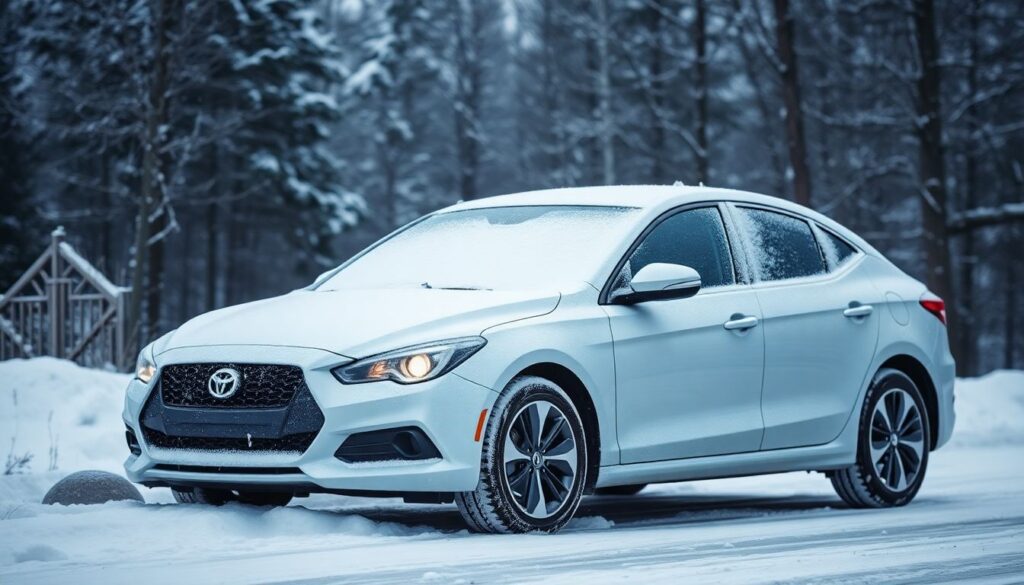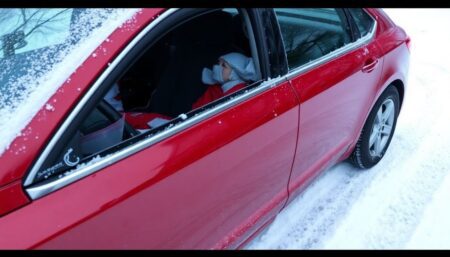As the winter season approaches, ensuring your vehicle is ready for the challenges of snowy and icy roads becomes crucial. In this article, we’ll explore the insights shared by Adair and Guthrie County Emergency Management Coordinator Jeremy Cooper on prepping vehicles for winter driving, as featured on Raccoon Valley Radio.
Expert Tips from Jeremy Cooper to Ensure Safe Winter Travel
Imagine a crisp winter morning, the sun barely peeking over the horizon, casting long shadows across the fresh, sparkling snow. The air is filled with a chilly silence, broken only by the crunch of boots as you walk towards your car, parked in the driveway. The vehicle is covered in a thin layer of frost, a testament to the cold night that has just passed.
You begin your winter preparations, knowing that the roads will be slick and the conditions challenging. First, you check the tires, ensuring they have enough tread to grip the icy surfaces. You might even consider putting on a set of winter tires, designed to handle the cold and snow more effectively. Next, you pop the hood to examine the battery. The last thing you want is to be stranded in the freezing cold with a car that won’t start.
Finally, you turn your attention to the windshield wipers. Visibility is crucial in a snowstorm, and good wipers make all the difference. You replace the blades if necessary and top up the wiper fluid with a winter-specific solution that won’t freeze. With each check, you’re not just preparing your car; you’re ensuring your safety and that of your loved ones. The scene is one of quiet determination, a ritual of winter readiness played out in driveways across the land.

The Importance of Winter Preparedness
As the days grow shorter and the temperature drops, preparing your vehicle for winter driving becomes an absolute necessity. The significance of this preparation cannot be overstated, as winter weather brings a unique set of challenges that can severely impact your safety on the road. From slippery roads to reduced visibility, the potential risks are numerous. Black ice, heavy snowfall, and prolonged exposure to cold temperatures can all lead to hazardous driving conditions. Being well-prepared ensures that you are equipped to handle these challenges, minimizing the risk of accidents and breakdowns.
One of the primary benefits of preparing your vehicle for winter driving is the enhanced safety it provides. By ensuring that your tires are in good condition, or better yet, switching to winter tires, you can significantly improve your vehicle’s grip on icy roads. Additionally, checking your vehicle’s battery, brakes, and heating system can prevent unexpected failures that could leave you stranded in the cold. Here are some key steps to consider:
- Inspect your tires for adequate tread and proper inflation.
- Test your battery to ensure it has enough power to start your vehicle in cold weather.
- Check your brakes for any signs of wear and tear.
- Ensure your heating and defrosting systems are functioning properly.
Moreover, being well-prepared for winter driving involves more than just mechanical checks. It’s crucial to keep an emergency kit in your vehicle, which can be a lifesaver in case you get stuck in the snow or face other winter-related emergencies. Your emergency kit should include items such as:
- A shovel and sand or cat litter (for traction).
- A flashlight and extra batteries.
- A first-aid kit.
- Extra warm clothing, gloves, and a blanket.
- Non-perishable food and water.
- A portable phone charger.
Lastly, the peace of mind that comes with knowing your vehicle is ready for winter driving is invaluable. By taking the time to prepare, you can drive with confidence, knowing that you have done everything possible to ensure your safety and the safety of your passengers. This proactive approach not only helps you avoid potential hazards but also allows you to enjoy the winter season without worrying about unexpected vehicle issues.
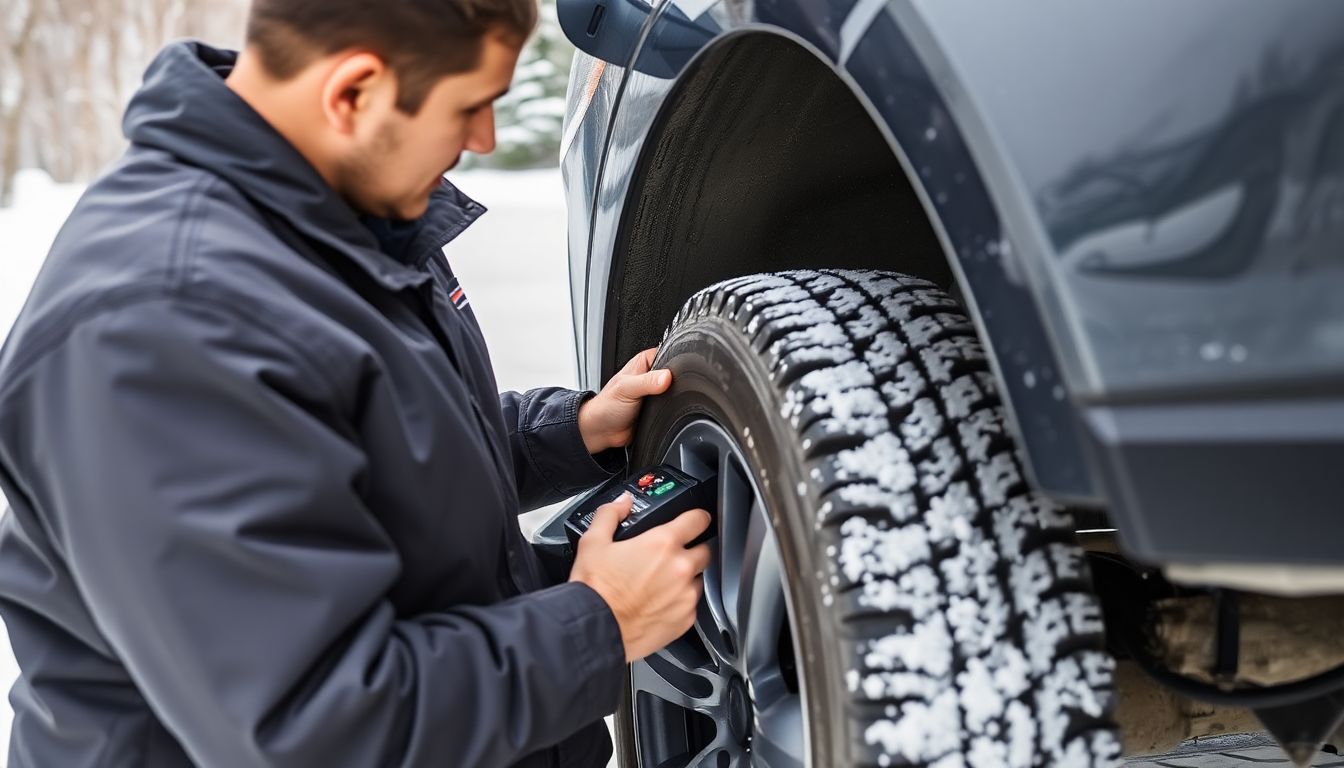
Essential Vehicle Checks
Winter driving can be challenging and dangerous, but with the right preparation, you can ensure your vehicle is up to the task. One of the key components to check is your vehicle’s battery. Cold weather can reduce battery power by up to 50%, so it’s crucial to ensure it’s in optimal condition. Here’s what you need to do:
- Check the battery’s charge level.
- Inspect the battery for any signs of corrosion or leaks.
- Make sure the battery cables are secure and in good condition.
- Consider replacing the battery if it’s more than three years old.
Next, turn your attention to the cooling system. While it may seem counterintuitive, your vehicle’s cooling system works overtime during winter to maintain the engine’s optimal operating temperature. To ensure it’s in tip-top shape:
- Flush and refill the cooling system with a 50/50 mix of antifreeze and water.
- Check the system for any leaks or cracks.
- Inspect the radiator and hoses for any signs of wear or damage.
Your vehicle’s tires are another crucial component to check before winter driving. Snow, ice, and cold temperatures can significantly impact tire performance and safety. Here are some tips to prepare your tires for winter:
- Check your tire tread depth. If it’s worn down to 2/32 of an inch or less, it’s time to replace them.
- Consider switching to winter tires, which are designed to provide better traction in cold temperatures and snowy conditions.
- Make sure your tires are properly inflated. Cold temperatures can cause tire pressure to drop, so check them regularly.
Lastly, don’t forget to keep an eye on your gas tank during winter. It’s not just about making sure you have enough fuel to get where you’re going; a full tank can also help prevent condensation from forming and freezing in your fuel lines. Additionally, keeping your tank at least half full can help you stay warm if you get stranded. Here are some tips for winter fueling:
- Keep your gas tank at least half full at all times.
- Use winter-grade fuel if available in your area.
- Consider using a fuel stabilizer if you plan on storing your vehicle for extended periods.
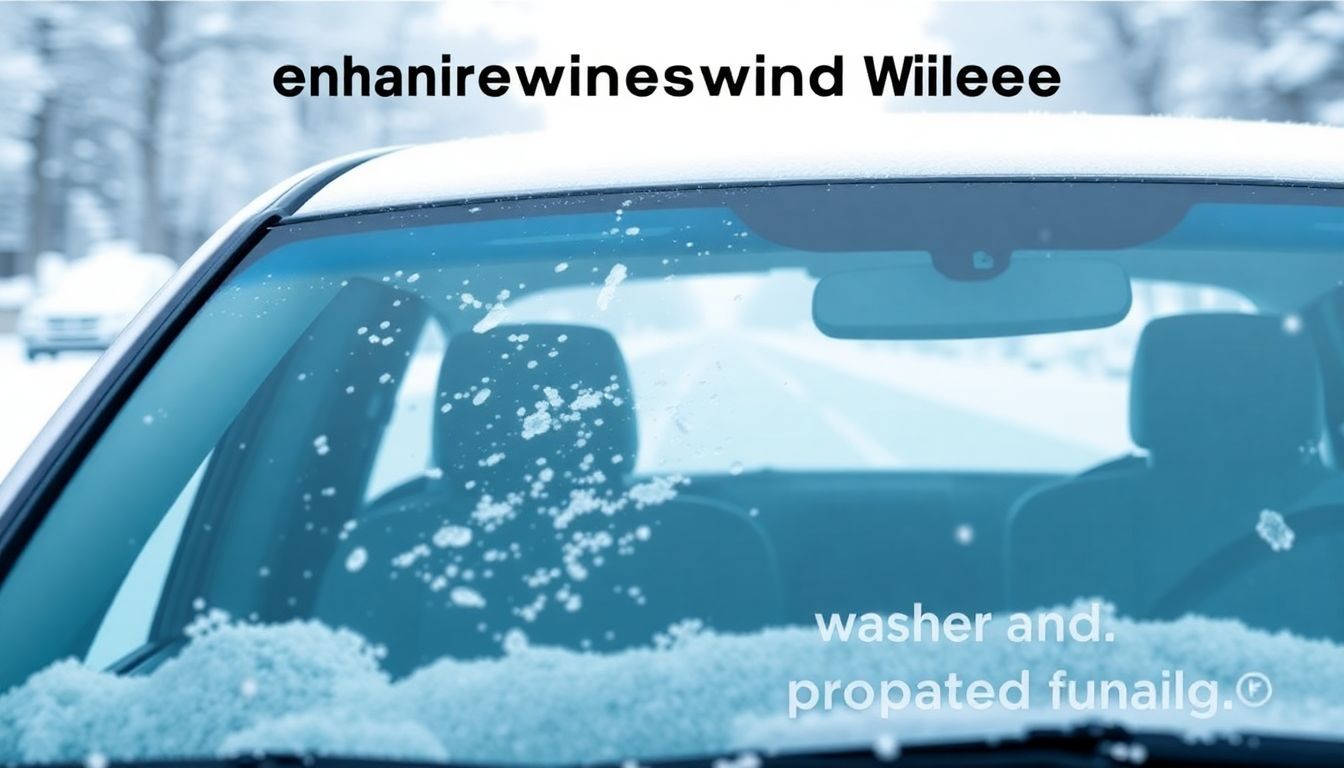
Visibility and Safety
As the winter months roll in, ensuring clear visibility while driving becomes more critical than ever. With snow, sleet, and slush frequently obscuring your view, maintaining a clear windshield is paramount for safety. According to the National Highway Traffic Safety Administration, poor visibility is a significant factor in many vehicle crashes. To keep your vision unhindered, one of the simplest yet most effective measures you can take is to ensure your windshield wipers are in excellent condition.
Windshield wipers are your first line of defense against winter precipitation. They work tirelessly to keep your windshield clear, but they’re often overlooked until they fail. To avoid being caught off guard, it’s wise to inspect your wipers regularly and replace them at least every six to twelve months, or sooner if they show signs of wear. Here are a few things to look out for:
- Cracked or torn rubber
- Streaking or skipping
- Squeaking or chattering noises
Remember, even the best wipers can’t do their job effectively if they’re frozen to the windshield. To prevent this, make sure to lift your wipers off the windshield before a expected freeze or snowfall.
Equally important is keeping your windshield washer fluid topped up. Washer fluid not only cleans your windshield but also has a lower freezing point than water, making it indispensable for winter driving. It’s always a good idea to keep extra washer fluid in your vehicle during the winter months, just in case. Here are some tips for using washer fluid effectively:
- Use a winter-specific washer fluid that’s rated for your region’s coldest temperatures
- Clear the snow and ice from your windshield before using your wipers and washer fluid
- Regularly check your washer fluid level and top it up as needed
Lastly, don’t forget to maintain the rest of your vehicle’s visibility aids. This includes your headlights, taillights, and mirrors. Keep them clear of snow, ice, and dirt to maximize your visibility and ensure others can see you. By combining well-maintained wipers, a steady supply of washer fluid, and clear visibility aids, you’ll be well on your way to safer winter driving.
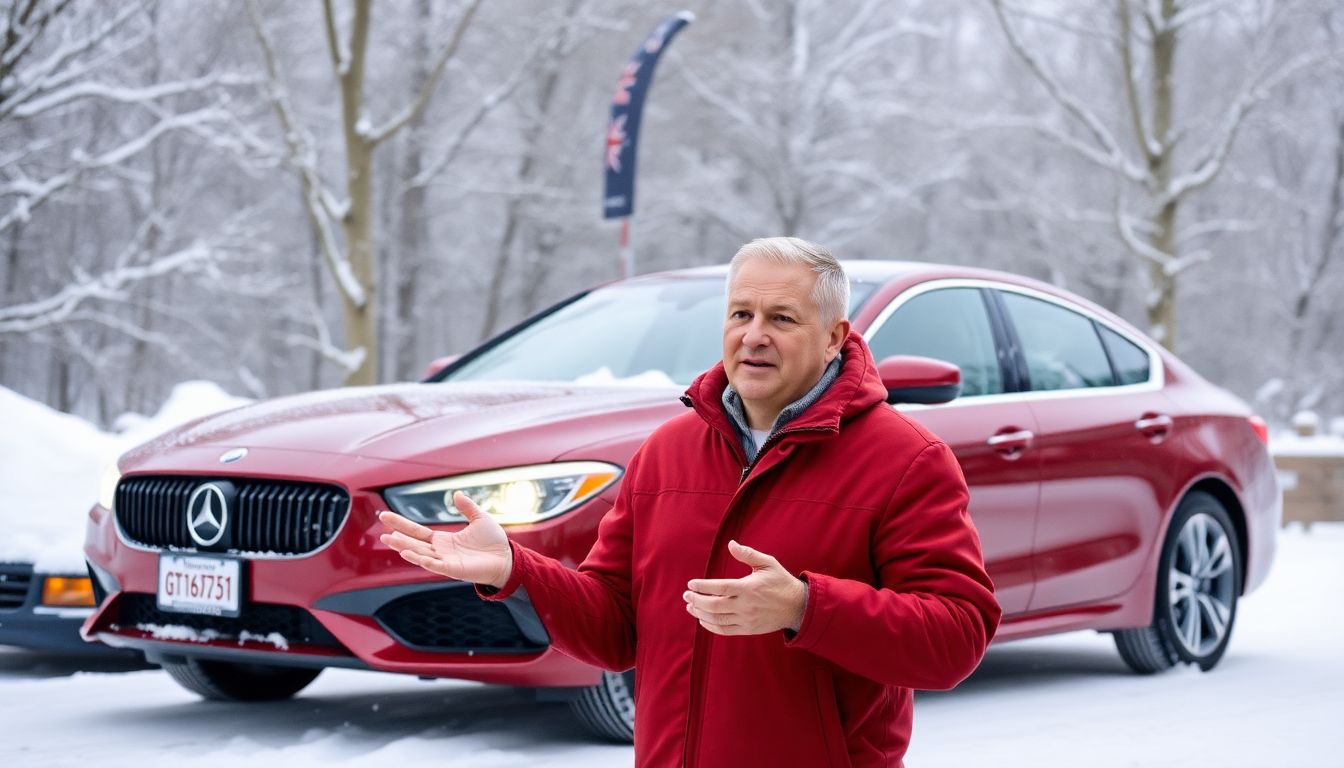
Expert Tips from Jeremy Cooper
Jeremy Cooper, a renowned automotive expert, has shared invaluable advice on preparing your vehicle for the harsh winter months. Cooper emphasizes that winterizing your vehicle is not just about comfort, but also about safety. One of the most practical steps he suggests is to check your tires. This includes ensuring that your tires have adequate tread depth to handle snowy and icy roads. Cooper recommends using a simple quarter test—insert a quarter into the tread groove with Washington’s head upside down. If you can see the top of Washington’s head, your tires need to be replaced. Additionally, consider switching to winter tires for better traction in cold temperatures.
Another crucial step is to check your battery. Cold weather can reduce battery power by up to 50 percent. Cooper advises having your battery tested by a professional to ensure it is in good condition. If your battery is more than three years old, it might be a good idea to replace it before the winter season begins.
Cooper also stresses the importance of maintaining your vehicle’s fluids. This includes checking the antifreeze level, which is essential for keeping your engine from freezing. A simple way to test this is by using a coolant tester, readily available at most auto parts stores. Additionally, ensure that your windshield washer fluid is topped up with a winter-specific solution that won’t freeze in cold temperatures.
Finally, Cooper suggests preparing an emergency kit for your vehicle. This kit should include essential items such as:
- A small shovel
- Sand or cat litter for traction
- A flashlight with extra batteries
- A first-aid kit
- Non-perishable food and water
- Warm clothing and blankets
- Jumper cables
Having these items readily available can make a significant difference in ensuring your safety during winter driving.
FAQ
What are the most important parts of a car to check before winter driving?
- Battery condition
- Cooling system
- Tire tread and inflation
- Gas tank level
- Windshield wipers and washer fluid
.



